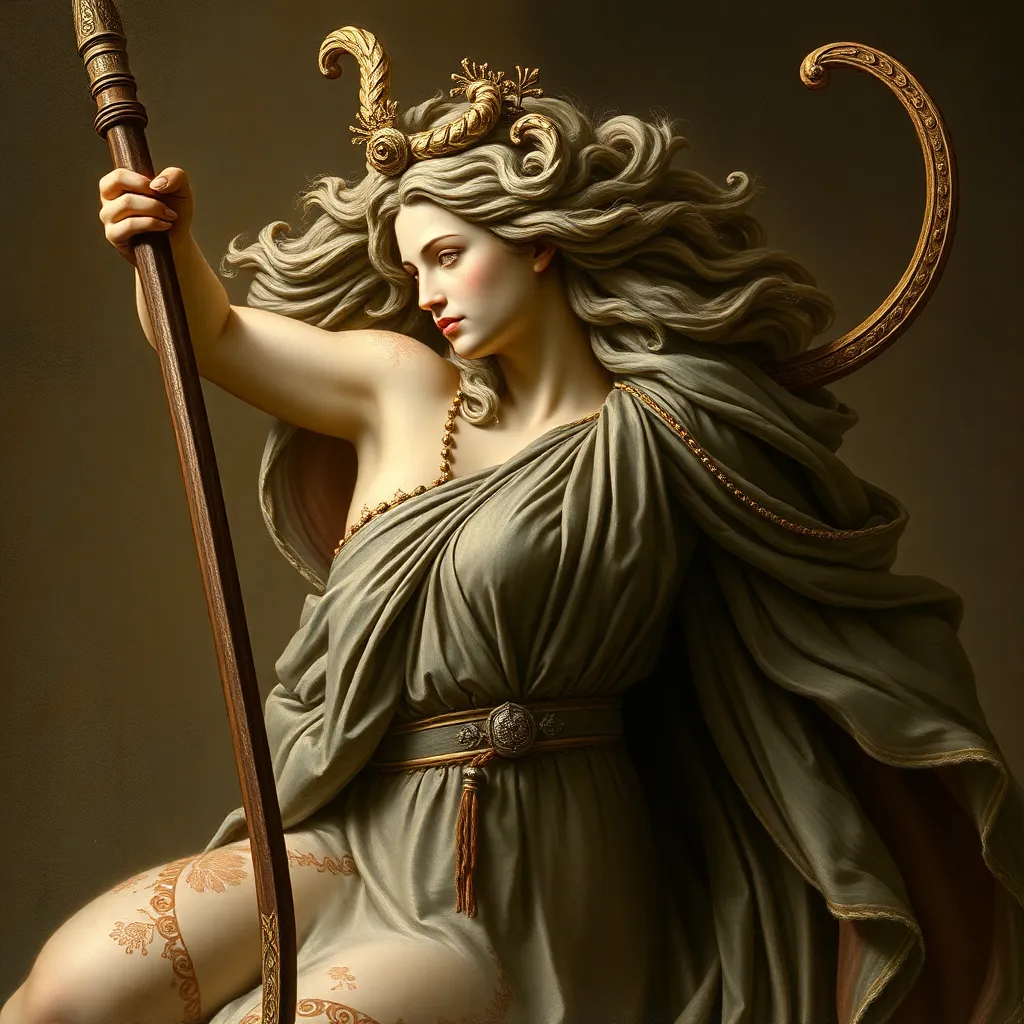The Artistic Depictions of Artemis Through the Ages
I. Introduction
Artemis, the Greek goddess of the hunt, wilderness, and childbirth, occupies a significant place in both ancient mythology and modern artistic expression. As a multifaceted figure, she represents the duality of nature—both nurturing and fierce. Over the centuries, artists have drawn inspiration from Artemis, depicting her in various forms and styles that reflect the cultural context of their times.
This article explores the artistic depictions of Artemis throughout history, highlighting her importance in both ancient and modern art, and examining how her image has evolved over time.
II. The Origins of Artemis in Greek Mythology
Artemis was born to Zeus and Leto, and she is often associated with the moon, contrasting with her twin brother Apollo, who is linked to the sun. Her origins are steeped in myth, and she is revered as a protector of young women and a goddess of childbirth.
Key attributes and symbolism associated with Artemis include:
- The bow and arrow, symbolizing her prowess as a huntress.
- The deer, representing her connection to nature and wildlife.
- The crescent moon, illustrating her association with the lunar cycle.
In ancient Greek religion, Artemis was worshipped in various festivals and rituals, reflecting her vital role in the daily lives of the people, particularly in matters of fertility and the natural world.
III. Early Artistic Representations of Artemis
Artistic representations of Artemis can be traced back to the Pre-Classical period in Greece. Early depictions were often found on pottery and in small sculptures, showcasing her as a youthful and athletic figure.
During the Archaic and Classical periods, the iconography of Artemis became more defined. Artists began to explore her themes of nature, hunting, and femininity in greater depth. Notable artworks include:
- Vases depicting scenes of Artemis with animals.
- Sculptures representing her as a maiden with a quiver of arrows.
One of the most significant monuments dedicated to Artemis was the Temple of Artemis at Ephesus, one of the Seven Wonders of the Ancient World. This temple not only celebrated her but also served as a central point for worship and artistic expression.
IV. The Classical Era: Masterpieces and Innovations
The Classical era marked a high point in the representation of Artemis, influenced by the ideals of beauty, proportion, and harmony that characterized Greek art. Artists sought to depict her as a powerful yet graceful figure, embodying the perfect balance between strength and femininity.
Famous sculptures and paintings from this period include:
- The statue of Artemis of Ephesus, showcasing her multi-breasted form, symbolizing fertility.
- Paintings and frescoes illustrating her hunting scenes, often accompanied by woodland creatures.
In many works, Artemis is portrayed as a huntress, emphasizing her role as a protector of wildlife and a symbol of independence.
V. Hellenistic and Roman Interpretations
During the Hellenistic period, the depiction of Artemis began to change, reflecting the era’s artistic innovations and cultural shifts. Artists focused more on emotional expression and dynamic poses, resulting in more dramatic portrayals of the goddess.
The Romans adopted many aspects of Greek art and mythology, leading to adaptations of Artemis in their own artistic traditions. Notable changes included:
- The blending of Artemis with the Roman goddess Diana, who shared similar attributes.
- Incorporation of more elaborate architectural elements in temples dedicated to her.
This period also saw the emergence of Artemis in various contexts, such as in domestic art and public spaces, reinforcing her presence in everyday life.
VI. The Renaissance Revival of Artemis
The Renaissance marked a revival of classical themes in art, leading to a renewed interest in mythological figures, including Artemis. Artists sought to reimagine ancient stories through their own unique lenses, often blending classical ideals with contemporary elements.
Key artists associated with the depiction of Artemis during the Renaissance include:
- Titian, whose painting “Diana and Actaeon” illustrates the goddess in a moment of serene beauty.
- Giorgione, who also explored themes of love and nature through his works featuring Artemis.
This period transformed Artemis’ image, emphasizing her beauty, grace, and power, while integrating new artistic techniques such as chiaroscuro and perspective.
VII. Modern and Contemporary Artistic Interpretations
The 19th and 20th centuries saw a significant evolution in the representation of Artemis. Artists began to explore her themes through new movements, such as Romanticism and Modernism, often reflecting contemporary societal issues.
Contemporary artists reinterpret Artemis’ themes in various ways, including:
- Exploring feminist themes, portraying Artemis as a symbol of female empowerment.
- Utilizing mixed media to connect her mythology with modern environmental issues.
The relevance of Artemis in modern feminist art highlights her as a figure of independence and strength, resonating with current discussions about gender and identity.
VIII. Conclusion
The artistic legacy of Artemis endures through the ages, reflecting the cultural values and artistic innovations of each period. From her origins in ancient mythology to her modern reinterpretations, Artemis remains a powerful symbol of the connection between humanity and nature.
As we reflect on the cultural significance of Artemis, it is clear that her image will continue to inspire artists in the future, offering endless possibilities for exploration and reinterpretation.




